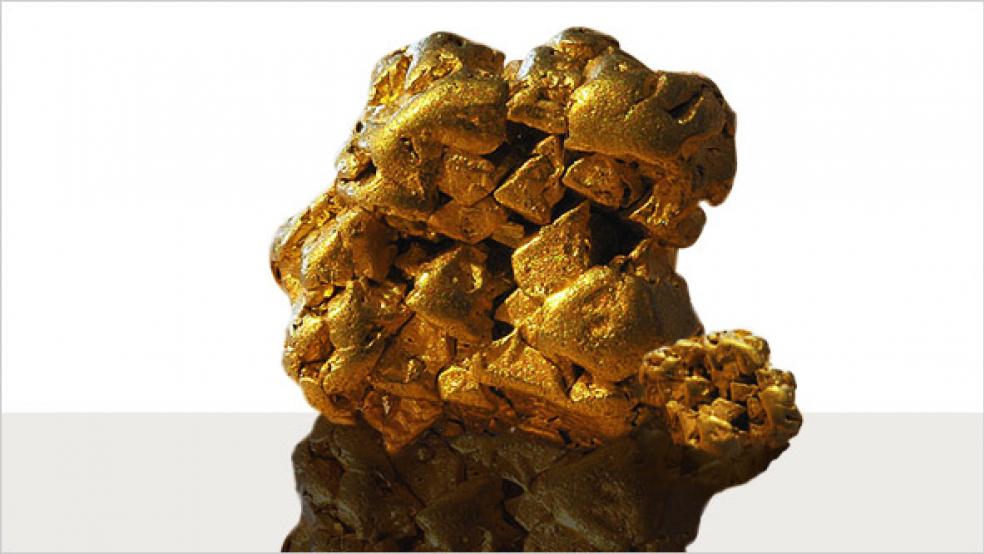Stocks weren’t the only investment winner in the first quarter of 2012. After a sharp pullback at the end of last year, gold futures wrapped up March with a three-day winning streak that left the precious metal at $1,669.30 an ounce, up 6.6 percent for the year so far.
But pundits remains sharply divided on whether investors should add to any existing holdings of gold now. A week ago, Goldman Sachs told investors to stock up on gold, predicting the price could hit $1,785 in the next three months and $1,940 an ounce within the next 12 months due to what the firm expects will be rock-bottom real interest rates. Another round of quantitative easing this year, Goldman’s economists predict, will weigh on interest rates and the dollar – both factors that should fuel another surge in the price of gold.
RELATED: Commodity Crunch: Forget Gold, Copper Is King
Not so fast, says Jim Paulsen, chief investment strategist at Wells Capital Management, who last week sent an equally urgent note to clients titled “Does Gold Still Glitter??” His conclusion: No, it doesn’t, and they shouldn’t succumb to its allure or to the sermons from gold bugs that it’s a great safe haven investment.
For starters, there simply isn’t enough fear around right now, Paulsen posits; that means that unless something happens to trigger a 2008-style panic, the amount of new buying is likely to be tepid. In turn, that means that price gains are likely to remain muted.
Both analyses have their flaws. Goldman Sachs, for instance, bases its view on a particular reading of the economy and an analysis of the Fed’s likely behavior. There’s no certainty that either will be borne out, particularly if this month’s crop of economic data comes in stronger than expected.
Meanwhile, it’s not at all clear that Paulsen’s is right to predict that the “fear premium” is unlikely to return and drive up the price of gold. After all, the metal’s price gains late last week were driven by the news that Eurozone finance ministers boosted the amount they are willing to inject into the region’s troubled financial system by some $900 billion. How much cash is it going to take to stop the Eurozone from stalling and seizing up in a credit crunch? And can the Eurozone keep meeting these urgent demands?
On balance, however, it’s hard to be a gold bull at these price levels. Sure, speculators may flood back into the gold market if they see that economic growth in the U.S. is flagging, or if there is any shock to the global financial system. But as Paulsen points out, gold already trades at or near record highs relative to most other major asset classes, including stocks and real estate. (It also is trading at a 70 percent premium to other commodities.)
That doesn’t mean it’s time to dump the gold that you already have, much less try and profit by taking on a bearish position in the futures market. Odds are, the precious metal’s price will bounce around at or near its current levels, trending lower only gradually. But it’s time to trim around the edges and to avoid buying more at such high levels.
Sure, if the Labor Department reports Friday that the U.S. jobless rate remained unchanged or even edged higher in March, that might cause another brief uptick in the gold price. But unless a clear pattern materializes involving falling corporate profit margins, declining consumer confidence, rising unemployment, a lower dollar and ongoing Fed action aimed at stimulating the economy, it no longer makes sense to hope for outsize gains from the gold market. It’s not a cheap investment to acquire or an easy one to manage (gold ETFs may require a different kind of oversight than buying gold futures, but the ETFs still aren’t a ‘buy and hold’ product).
Goldman Sachs’ clientele – the target of its investment recommendation – are wealthy individuals and big institutions, not retail investors. For the latter, erring on the side of caution by buying gold is the wiser option. For the rest of us, right now prudence dictates looking beyond gold to other commodities or other asset classes.






